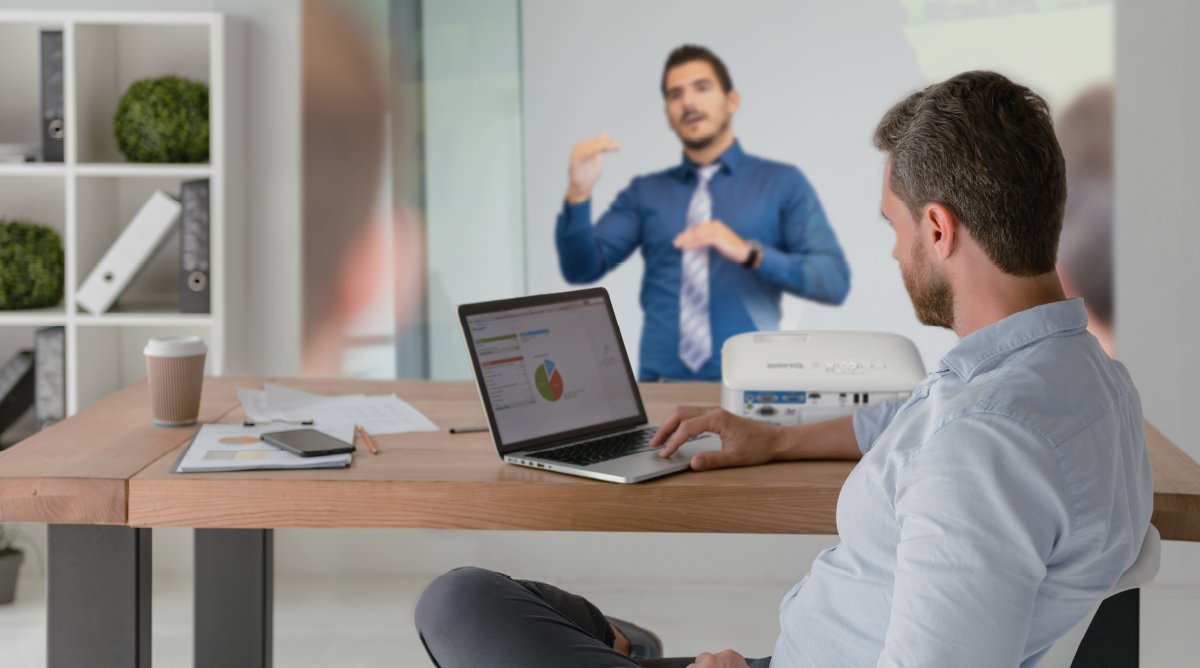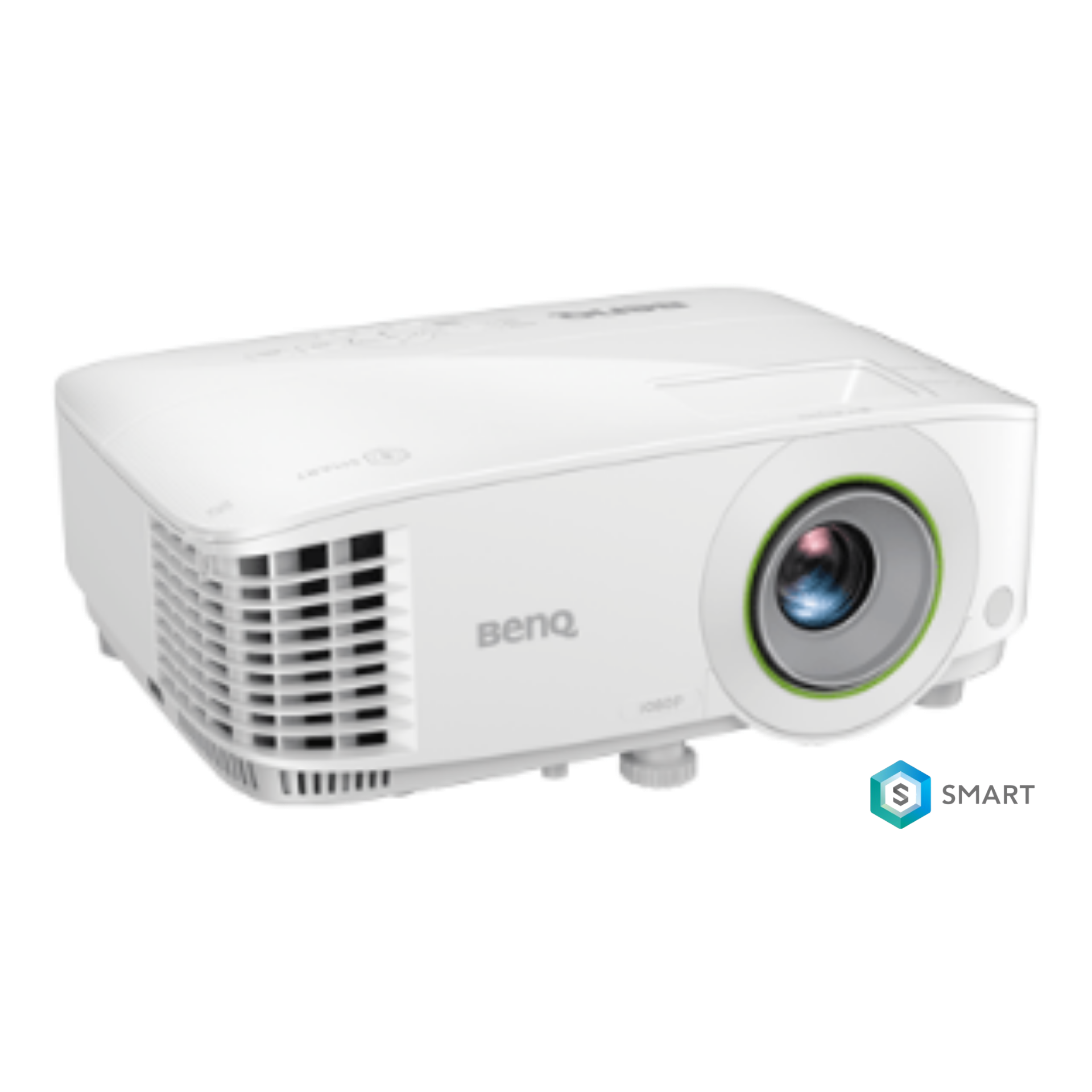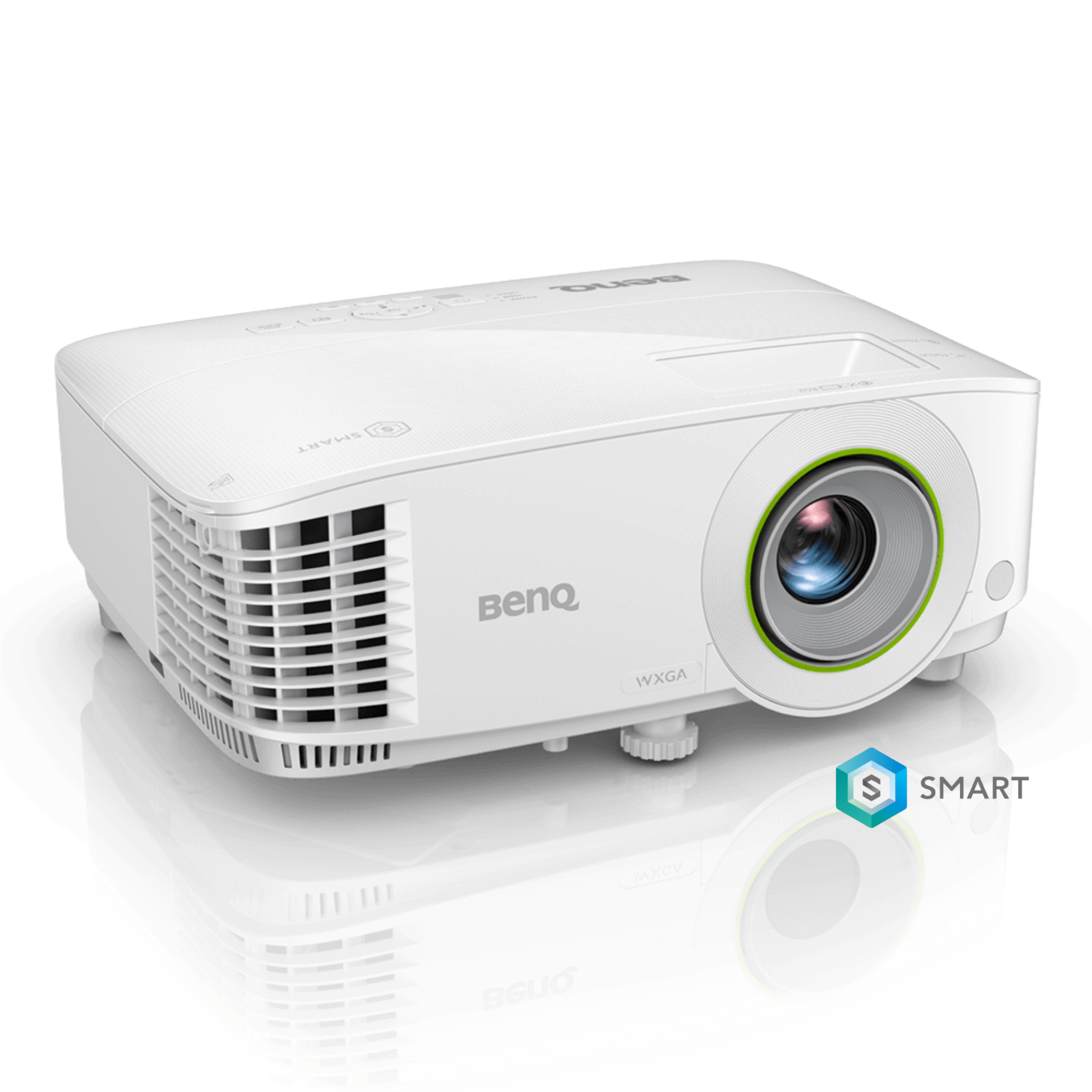How can I reduce Zoom fatigue?
- BenQ
- 2020-11-18
With the rise of video conferencing and remote work during 2020, many of us have turned to the popular Zoom platform to stay in touch with coworkers. But that gets really tiring after a while. Using Zoom forces us to stay close to a webcam, typically hunched over our laptops. It also means staring at a few tiny faces on screen, which leads to eye strain. Then there’s the looking at colleagues’ bedrooms, kitchens, plants, and wardrobes in the background. It’s all too much.
Sure, you can turn off or cover the webcam or go to audio-only mode, but then your colleagues may think you’re being somewhat anti-social. It’s just not very polite to act like that.
We say if you need to use Zoom, do it big. Replacing tiny screens with large projected ones at least cures the eye strain aspect right away, and gives every video conference a major “wow” factor that’ll invigorate you to mitigate Zoom fatigue at your home office. Smart wireless projectors help with that.
Defining Zoom fatigue
We have the pandemic to thank for this problem. As more people have been forced to work from home, Zoom rose to prominence thanks to its easy access. No accounts, no logins, just simple invites and so on. At first it was a novelty, but after nearly a year people feel isolated and tired of constantly staring at other people’s private spaces, as research indicates. How many times can you have a meeting interrupted by a coworker’s cat before it stops being amusing? And there’s something truly awkward about seeing people at home, often in their pajamas, with their home décor in the background. All on small screens that make the experience not exactly appealing.
From a psychological and social standpoint, Zoom fatigue also refers to the weird nature of video conferences.

"Without being in the same room, it’s hard to gauge other people’s body language, especially on small screens. We don’t know when they want to speak, so we keep cutting each other off. "
We also end up staring at faces, and can only see talking heads, not entire bodies. That takes away from the interactive aspect of live meetings and creates stress for many people. All of these factors combine to generate Zoom fatigue.
Tips for reducing Zoom fatigue
We don’t have a complete cure, since as long as virtual and remote work remain popular the basic issues related to them will also continue. But there are steps you can take to liven up the experience.
Hide self or audio only mode: Zoom developers have implemented these features in response to user feedback. A lot of people feel self-conscious when others look into their private space, causing mental fatigue. Likewise, many get tired of seeing the same talking heads and backgrounds day after day. The option to hide yourself and to only use audio can prove useful, although as noted above, your colleagues may find either a bit unfriendly. Another option may be to change viewing or screen placement angles occasionally to spice things up a little and avoid motivation-sapping repetition, with more subtle screen stimuli.
Dedicated Zoom call space: set up an area of your home that for the time being will be optimized for Zoom calls. Make sure it’s neat and free of possible surprises, like kids or pets jumping in. This way, you won’t be constantly stressed about private stuff accidentally ending up on a Zoom call, which will lower your fatigue and strain levels.
Consider using a smart wireless projector: physically and emotionally, these devices inject a professional feel to home offices.

“With meetings shown in big format on your wall or a screen, it feels like being back at the office.”
That’s already half the battle, as you’re mentally invigorated. There’s also the strain relief aspect. Projectors provide big displays that are much easier to look at than tiny windows on a laptop. Your eyes will thank you, and you’ll intuitively feel more confident looking at coworkers and interacting with them. With clarity of display, you’ll be able to better judge people’s facial expressions and even body language, removing a lot of the guesswork that contributes to Zoom fatigue.
It’s time to stop worrying about how you look and how other people see you on video calls and to go back to focusing on the job at hand. And we think smart wireless projectors can certainly help.



